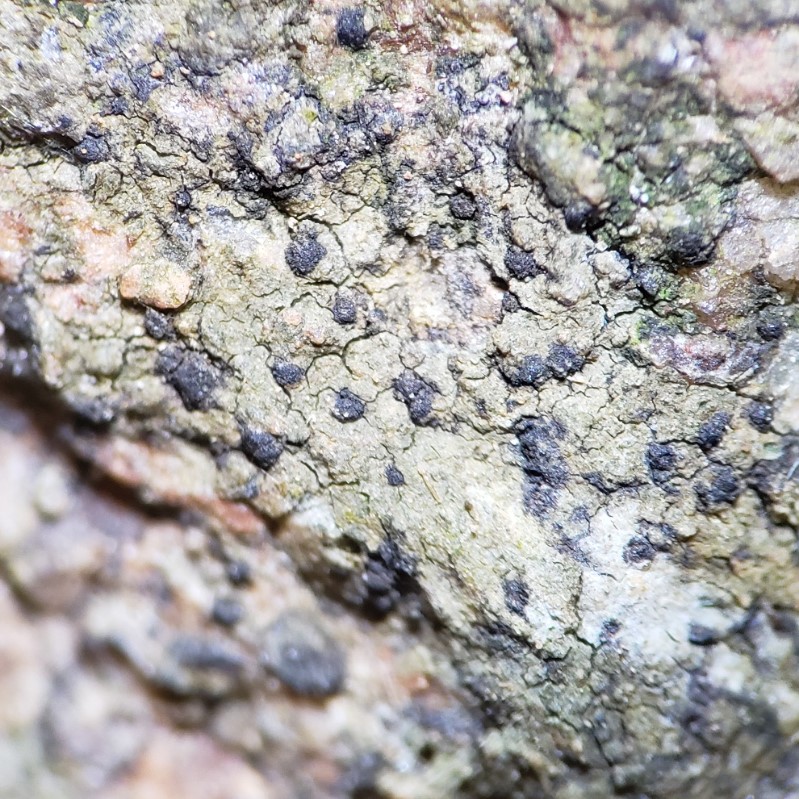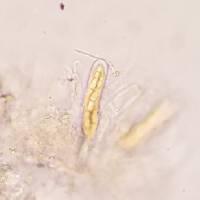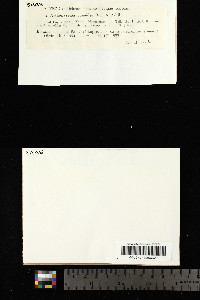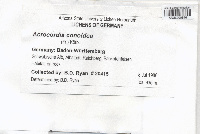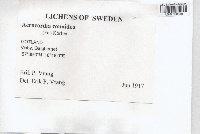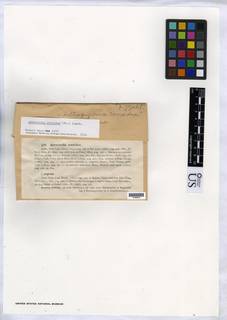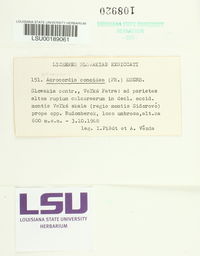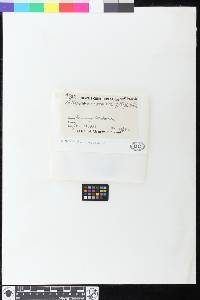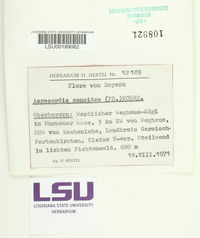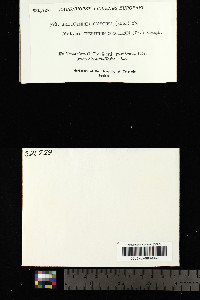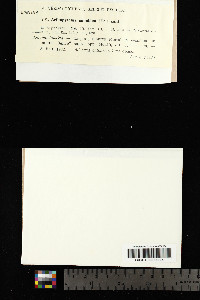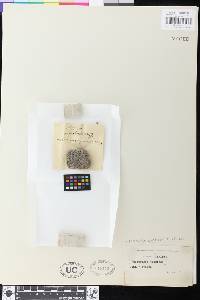
Consortium of Lichen Herbaria
- building a Global Consortium of Bryophytes and Lichens as keystones of cryptobiotic communities -
- Home
- Search
- Images
- Species Checklists
- US States: O-Z >
- US National Parks
- Central America
- South America
- US National Parks
- Southern Subpolar Region
|
|
|
|
Family: Monoblastiaceae
[Acrocordia conoidea f. carnea Arnold, moreAcrocordia epipolaea (Borrer) A.L. Sm., Arthopyrenia conoidea (Fr.) Zahlbr., Arthopyrenia conoidea var. conoidea (Fr.) Zahlbr., Arthopyrenia conoidea var. suzae Vězda, Arthopyrenia conoidea var. triseptata (Nyl.) Zahlbr., Arthopyrenia epipolaea (Borrer) A. Massal., Leiophloea conoidea (Fr.) Trevis., Sagedia conoidea (Fr.) Hepp, Thelidium conoideum (Fr.) Kremp., Verrucaria conoidea Fr., Verrucaria conoidea var. conoidea Fr., Verrucaria conoidea var. triseptata Nyl., Verrucaria epipolaea Borrer, Verrucaria epipolaea var. epipolaea Ach., Verrucaria epipolaea var. orbicularis Garov., Verrucaria epipolaea var. rugulosa Schaer.] |
Nash, T.H., Ryan, B.D., Gries, C., Bungartz, F., (eds.) 2002. Lichen Flora of the Greater Sonoran Desert Region. Vol 1. Thallus: continuous to rimose, areolated with the margins of the areoles often upturned, not immersed in the substrate upper surface: pale sand-colored brown photobiont: a trentepohlioid alga Perithecia: hemispherical, black, immersed in the thallus, 0.4-0.8 mm diam. ascomatal wall: black, continuous below the hamathecium hamathecium: branched pseudoparaphyses, anastomosing above the asci; filaments: c. 1 micro meters wide, not inspersed with oil droplets asci: cylindrical, c. 120 x 12 µm, with 8, uniseriately arranged ascospores, tip with a conspicuous tholus ascospores: hyaline, broadly ellipsoid, 1-septate with a median euseptum, 14-18 x 7-9 micro meters; walls: ornamented with tiny warts, without a gelatinous sheath Pycnidia: frequent to numerous, 0.14-0.20 mm diam. conidia: ellipsoid to narrowly ellipsoid, simple, hyaline Spot tests: all negative, UV negative Secondary metabolites: none detected. Substrate and ecology: on calcareous, disintegrating, sandstone and shale World distribution: mostly temperate in the Northern Hemisphere Sonoran distribution: only known from the Channel Islands in California. Notes: The related Acrocordia cavata (Ach.) R. C. Harris, that occurs on bark, has been erroneously reported from the area, as Arthopyrenia sphaeroides (Wallr.) Zahlbr. |
Powered by Symbiota

